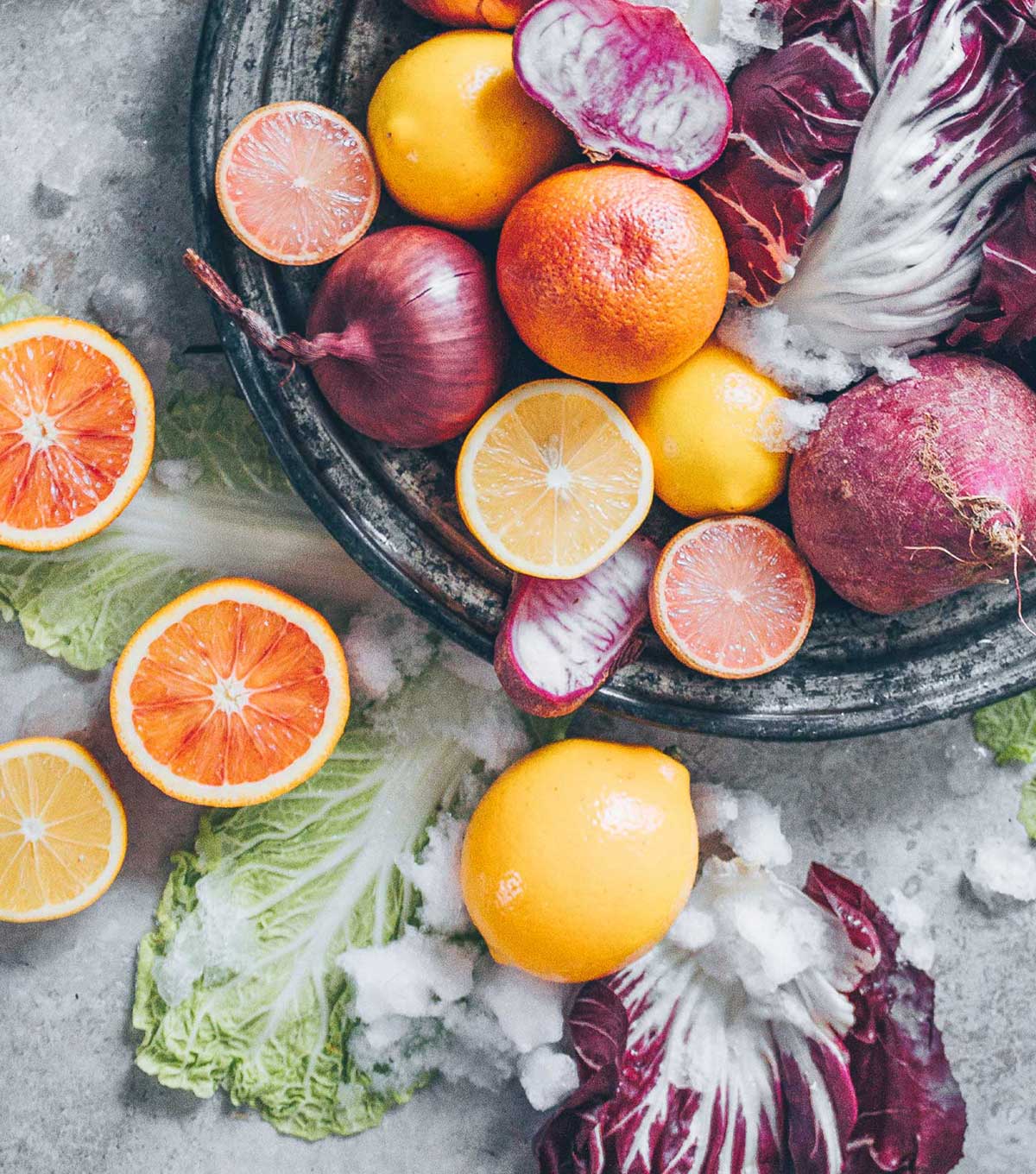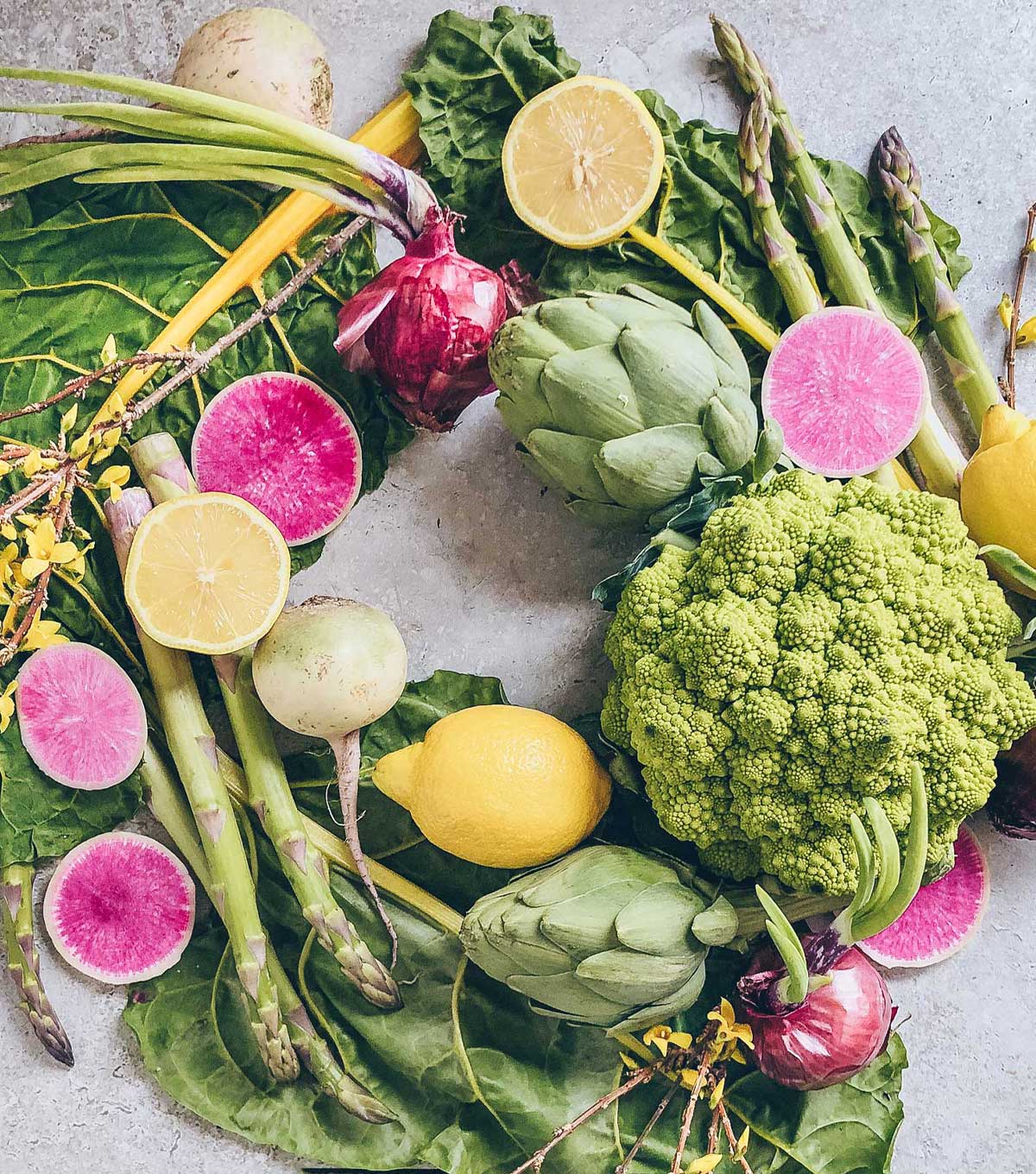Eating With The Seasons: January

Before I touch on seasonal eating for January, I first want to say that I am so happy that we are here, in a new year. This past year has been one of the most trying, disconcerting, and unusual times that I think any of us have ever experienced. I am so very happy that we are here together. Happy New Year, friends!
While I don’t know what this new year will bring, I am ready for something fresh and new… and I seem to be channeling that by jumping headfirst into the start of citrus season. There’s not much brighter and fresher than that!
Seasonal Eating
As the world around us shifts with the seasons, so do the foods that are harvested. It should only make sense then, that our eating follows this same pattern. Seasonal eating is when you eat foods at the time of year that they are harvested. This is something that we tend to do naturally, eating pumpkin in fall for instance, or asparagus in spring. But did you know that seasonal eating throughout the year can improve your health and the environment?
The Benefits Of Seasonal Eating
In Season Produce Tastes Better
Eating foods that are harvested when they are ripe in their local growing season simply taste better. Out of season produce on the other hand is picked early, stored in cold storage for months, and sometimes travels long distances to reach you. In season fruits and vegetables are allowed to ripen fully before being harvested, which improves not only their flavor, but their nutrition too.
Eating Seasonally Improves Nutrition
Allowing produce to ripen fully before harvesting maximizes its nutrient availability (the amount that your body is able to process.) It is at it’s maximum right after harvest, so eating fruits and vegetables right after they are picked is better for you. As the time from harvest increases, the nutrient availability decreases, sometimes by as much as 30-50%.
Seasonal Eating Supports Gut Health
Eating seasonally means that you are eating foods as they become available from season to season, or month to month. This means that instead of eating the same foods all year round, you are eating a varied mix, diversifying your diet. Studies have shown that human microbiomes change in accordance with the seasons, and that eating seasonally can help promote proper gut bacteria and improve health. For more on the importance of gut health click here.
It Is Better For The Environment
Eating out of season and non-local produce not only decreases the nutritional value of the foods, it also increases the carbon footprint of them. Out of season produce can be kept in cold storage for months, using energy to preserve it. Non-local produce often must be flown or shipped long distances to reach you. increases their carbon footprint.

Seasonal Eating Guide For January
Seasonal Low-Carb, Keto Fruits And Vegetables For January
- Lemons
- Blood Oranges
- Grapefruit
- Limes
- Celeriac
- Endive
- Frisee
- Fennel
- Kale
- Cabbage
- Leeks
- Celery
- Rutabaga
- Turnips
- Delicata & Spaghetti Squash
- Brussel Sprouts
- Broccoli
- Cauliflower
- Collard Greens
- Shallots & Onions
Is Citrus Keto-Friendly?
The answer is yes and no. Some citrus fruits have high amounts of sugar and carbs making them not ideal to eat (or drink) in their entirety. But that doesn’t mean that you have to cut them out entirely. The great thing about citrus fruits is that they can be used for their juice, zest, or flesh… so you can enjoy that citrus flavor without having to eat the whole fruit.




Leave a Reply